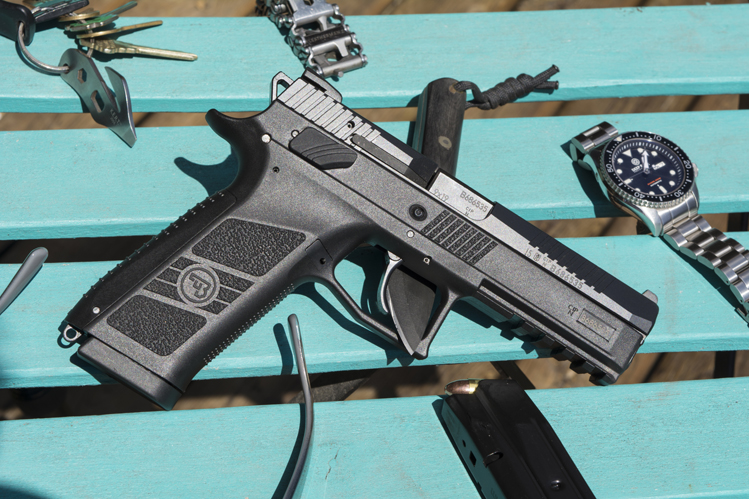
We haven’t always loved CZ pistols. We know, they’ve dominated IPSC for ages. They’re common enough to run with confidence, but exotic enough to be cool. They’ve got plenty of history and plenty of performance. We just didn’t entirely trust them, going back to an incident in which a bunch of people were using magazines that were “supposed” to work in their CZs, and didn’t. We ended up witnessing a whole litany of failures and malfunctions, and, not knowing that the magazines were the issue, developed a nagging mistrust of CZ pistols.
But we’ve grown as people. We can admit when we were wrong. Also, we suspect that CZ is better at building guns than ever, and as such, this isn’t entirely our fault. So now that they’re good and better and we know it, let’s take a look at their latest full-size offering, the CZ P-09.
The P-09 is the big brother of the successful CZ P-07, which, sadly prohibited in Canada as a result of its barrel length, has made some waves as a carry pistol in the usually domestically fixated US market. And a bigger brother it certainly is: with a capacity of 19 rounds (in deadly places not protected by the mighty pop-rivet which keeps us all safe) and a brick of a frame which follows the lines of the Shadow with its full dustcover and slablike sides, this is not a gun intended for…inconspicuous activities.
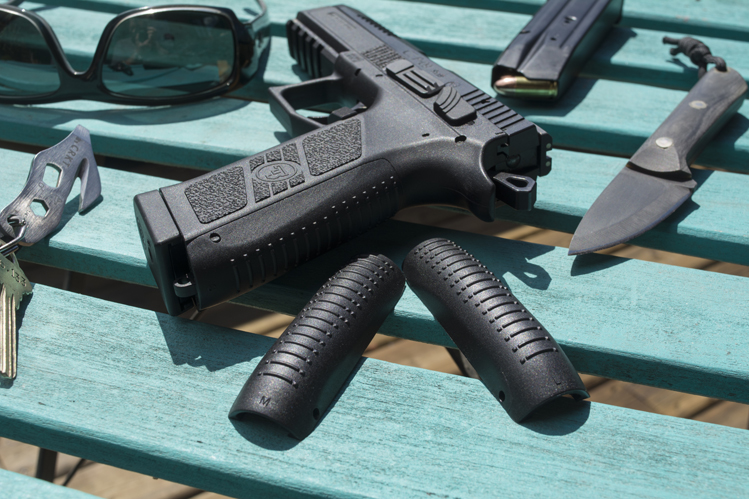
The frame is large, but fairly slim, giving it a feel a little less blocky than some, although not achieving the smooth contours of the SIG P320 or Smith and Wesson M&P 2.0. Surface texturing has been applied intelligently across the board and is some of the best we’ve seen: there is enough texture on the grip panels to keep the pistol locked firmly in place but nothing is overly abrasive. The interchangeable backstrap, rather than sporting some of the more sadistic diamond checkering we’ve often encountered, carries muted horizontal lines, which for our purposes is quite nice. It won’t work as well if you’re shooting in environments that necessitate gloves, but then at least it doesn’t make every environment into one that demands gloves. After a long shooting session, the muted backstrap grip is a godsend.
There’s also a stippled section just above the forward half of the trigger guard. We can’t believe it’s taken this long for us to find a factory gun with this feature; look at any polymer with an aftermarket stippling treatment and you’ll see a grippy spot has been put right there, to interface with your support hand thumb on one side, and your trigger finger on the other. Everybody who stipples a gun does this because it helps both to control the gun in recoil and to manipulate the gun administratively with your trigger finger resting on a hard reference surface (i.e. definitely not the trigger).
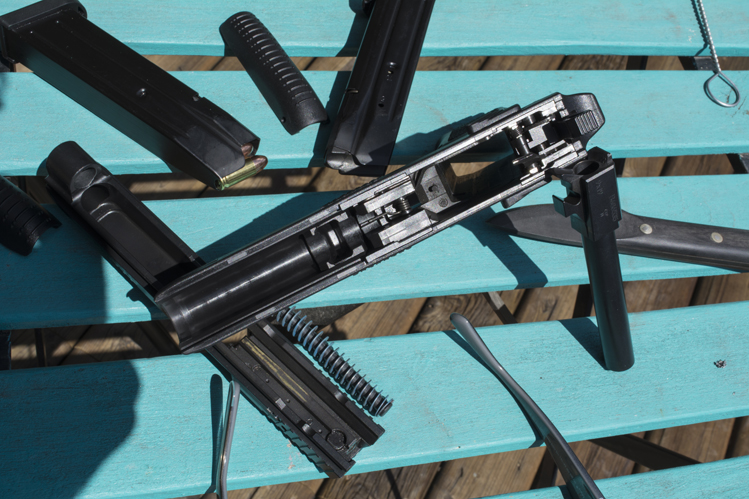
The trigger, which is the CZ “Omega” as used in quite a few of their pistols, is very typical of CZ and that’s not a complaint, it’s a compliment. On the first press it’s little rougher and heavier than a classic CZ75b, say, but the single action is shorter and smoother than the pre-Omega triggers. As with any traditional double action pistol, there’s a lot of take-up on the first press but it’s manageable, with a weight a little over 10 lbs. The single action weight feels more like three. Reset is longer than we’d ideally like, but that’s entirely personal preference and this doesn’t hinder the performance of the gun at all. We found the trigger perfectly suited to what’s sometimes called the “flip and press” style of shooting: rather than riding the sear and backing the trigger finger off the bare minimum to allow for reset, the gun is treated like a revolver and the trigger finger is let out well past the reset, even off the trigger entirely, and then run straight back through the full range of motion with no staging of the break at all.
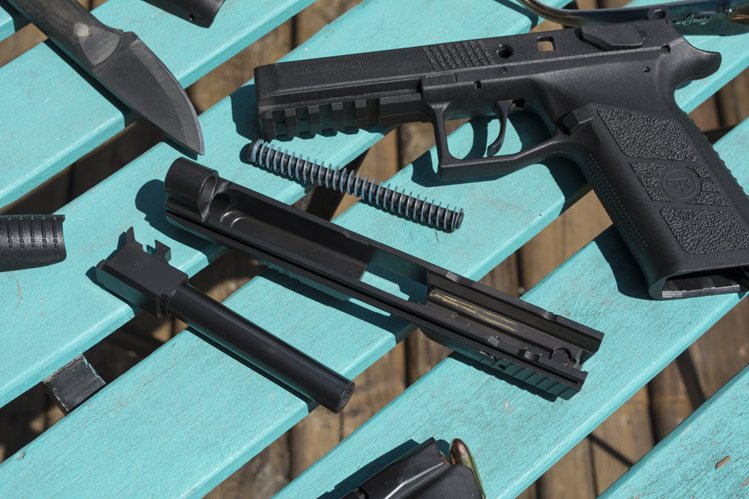
The decocker is similarly easy to hit, and while it doesn’t protrude far from the frame it’s deeply and broadly serrated and extremely grippy and functional despite its relatively low profile, as is the slide release. What’s more, the gun ships with all the parts necessary to convert it from a decocker to a manual thumb safety, running it permanently in single action like a 1911. That’s just…we don’t even know what the adjective is. For a service pistol in this bubble-wrapped, enwimpificated era, it’s just awesome.
The magazine release is designed similarly; it doesn’t project very far from the frame but manages to be almost impossible to miss. Magazines lock in firmly and eject easily.
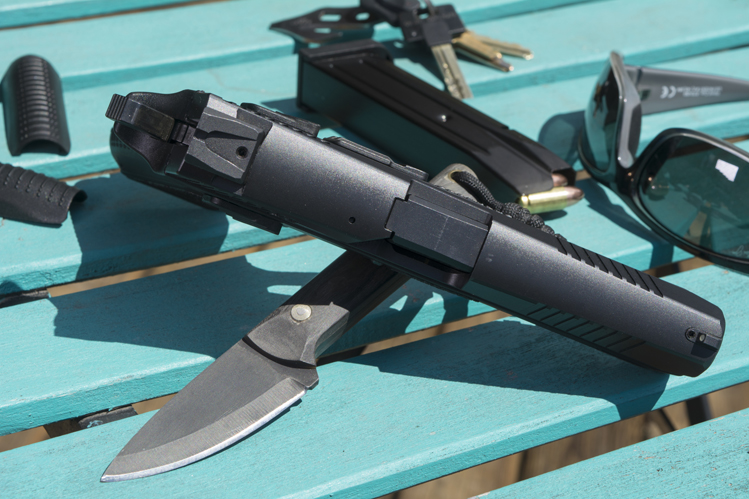
The slide is easier to grip than that of the Shadow 2, their pure competition machine we reviewed not long ago, which makes sense as the P-09 is a workhorse, not a racehorse. At the range, we gave it no consideration during shooting, and that was a marked difference from the flagship, on which the slide profile was one of our only objections.
What the CZ P-09 did share with the Shadow 2 is ease of shooting. This is, like so many CZs, a supremely easy pistol to shoot accurately. Our first magazine went easily into a 2” circle at 10 yards; at that distance we found we could aggressively slap the trigger at near-maximum speed and be confident in hand-sized groups with no difficulty at all. The polymer frame is lighter than the alloy Shadows, but it’s also more flexible and it soaks up recoil almost equally well.
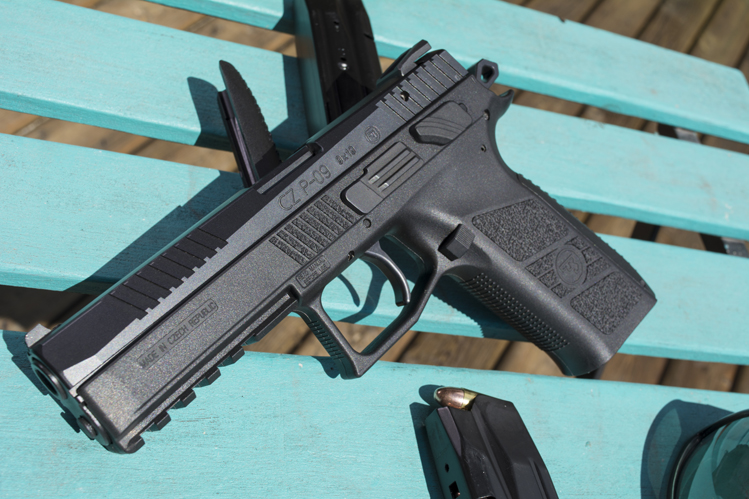
But if you’re looking for a service pistol and size is not a concern, this is one of the best we’ve ever shot, period. They go for around $800 or so, which puts them right around the sweet spot for gunfighter plastic in Canada. But believe us when we say: these are some of the easiest guns to shoot this well that we’ve ever seen.